Exit bomb-sniffing dogs, enter Britain’s Duke and Duchess of Cambridge, the cosmic royal couple who, in sporting good form, donned aprons to each create 10-minute mandala drawings. Mandalas! Really? Really! Their hosts: Los Angeles-based Inner-City Arts Academy.
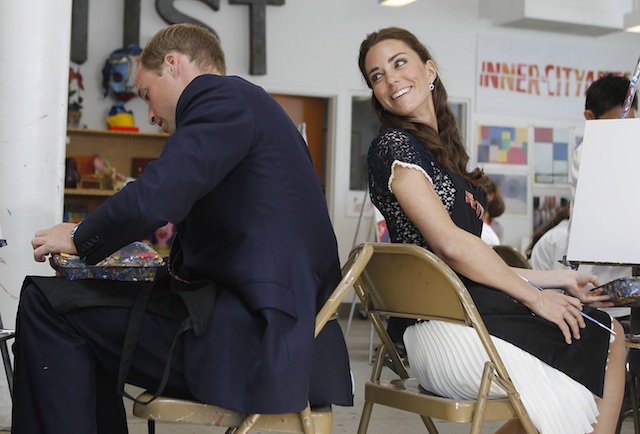
Britain's Prince William and his wife Catherine, Duchess of Cambridge, sit down to paint a mandala (AP Photo/Alex Gallardo, Pool)
Catherine, Duchess of Cambridge, channeled a set of concentric circles to make up the shell of a red snail sitting upon green grass. Prince William focused on a small four-fold geometrical cross-pattern in the three primary colors: red petals, blue center contained by a yellow square. See a video report of the art making and mandala paintings in this short news piece.
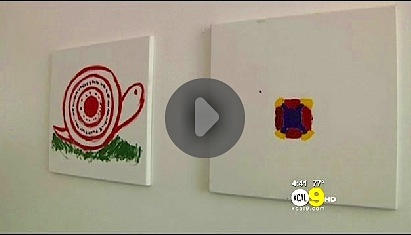
Mandalas painted by Catherine, Duchess of Cambridge on left, and Prince William, on the right.
Prince William and his new wife Catherine, observed 20 5th grade students creating mandalas. A mandala begins in the center of the page and the design grows to the outer edges of the drawing surface. “Mandala”, which means “circle” in Sanskrit, is a sacred symbolic representation of the universe often used for contemplation. Carl G. Jung used mandala drawing as a tool in psychoanalysis, finding that the mandala form often delivers messages from the subconscious through expressive art-making with a centralized focus.
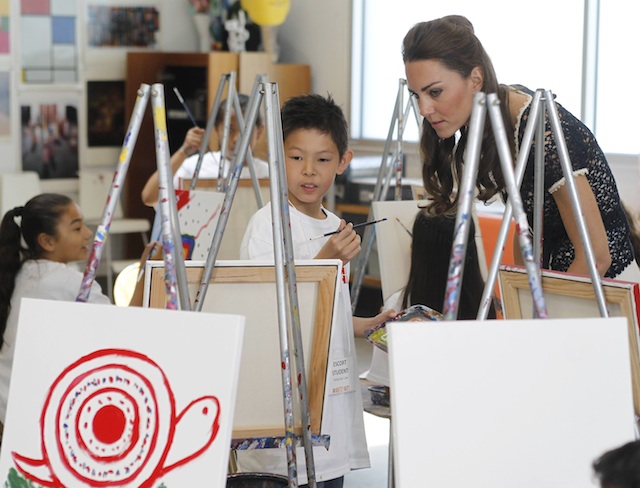
Kate, the Duchess of Cambridge, speaks to students during a tour of the Inner City Arts campus in Los Angeles. Her own mandala painting in foreground. (AP Photo/Alex Gallardo, Pool)
A few young students of Inner City Arts were asked to teach the Royal Couple how to paint mandalas. “Our children reach down deep within themselves to express feelings with shapes and colors, and eventually a beautiful pattern emerges that reflects an inspired portrait of their universe.” said the art center’s co‐founder, Bob Bates.
What can we learn from these mandalas?
Some associations for these symbolic paintings may hint at the deep universal structures of the human psyche.
Kate’s Snail
Concentric circles encompass a unity and protection of the inner self. Kate’s circles are not looping and spiraling, but contained one within the other. Circles can indicate one who is open to change, and the red dot in the center may indicate a desire to be independent and self-sufficient. The tiny speckled dots contained within the rings, indicate a solid center surrounded by many.
The color red has long been associated with blood and ritual. Red is often serving the emotions, the “feeling center”. It is an energetic, fiery, thriving color. The green grass, cools the heat a bit, and indicates a strong life force— Mother Nature, healing and nurturing.
Thus this vibrant red snail, a slow creature with a protective shell, resting on cooling green grass, may indicate Kate’s desire to slow down, and have some me-time to rejuvenate her inner resources. That certainly would make sense for a newlywed on a public world tour honeymoon.
Will’s Cross
An equidistant cross represents relationship. Like a ‘plus sign’, it is the symbol of coupling, integration and connection. This symbol reflects two parts merging to create a greater whole. The equidistant cross, the number 4, and the square intersect as symbols for balance, harmony, and order. Those attracted to the square are often ready to build on a solid foundation, and value integrity, stability, and authenticity.
Red, yellow, and blue are the primary colors, all colors come from mixing these three. This palette for the mandala indicates an elemental, pure combination, a getting down to basics. The blue center can represents the cooling qualities of water, and Jungians associate blue with the “thinking center”. Interestingly, deep indigo blue can signal those who have experienced a life-threatening event and according to the clinical findings of Joan Kellogg (1978), blue can indicate fears connected to the mother. The golden yellow surround can indicate warmth and energy, a readiness to transform the Self. The yellow also “squares the circle”, one of the most ancient geometric forms symbolizing the convergence of Heaven and Earth.
So, the mandala suggests of this newly married young man, that he is ready to take on his role in the world with integrity, possibly seeking stability and authentic connection after a shocking event around his mother. He may be the ‘cool head’ to Kate’s more emotional center.
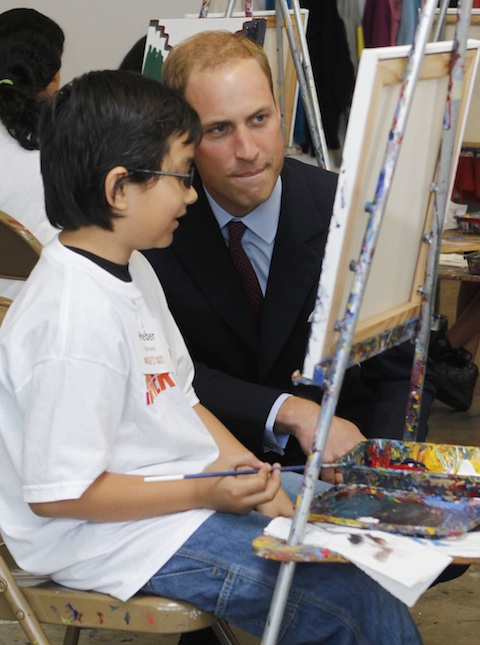
Britain's Prince William contemplates a student's mandala (AP Photo/Alex Gallardo, Pool)
I say Hurray to Inner-City Arts for choosing this deep, mystic exercise for their students and Woot! Woot! to the young Royals for participating. Mandala painting can be a very powerful healing tool, as evidenced through the archetypal patterns that emerge in even the briefest of encounters. It is a beautiful thing that the Royal couple opened their hearts to make a mandala, and especially under the glare of journalists, photographers and news cameras…and OK, bloggers too. {smile}.
As student of the mandala, and a maker myself, I’ve dedicated many articles to this art form on my blog. Please feel free to read more about this engaging art by clicking the category: “Mandala Mash-up”. You might also like my post about the Royal Wedding and the significance of the cosmic Westminster Abbey pavement.
RESOURCES
Bibliographical resources:
A. Arrien, 1992, Signs of Life: The Five Universal Shapes and How to Use Them, Jeremy P. Tarcher/Putnam edition 1998
S. Fincher, 1991, Creating Mandalas for Insight Healing and Self Expression, Shambala Publications, Inc.
L. B. Cunningham, 2010, The Mandala Book: Patterns of the Universe, Sterling Publishing Co.
C. G. Jung, 1964, Man and his Symbols, Doubleday/Windfall Publishers
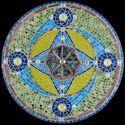

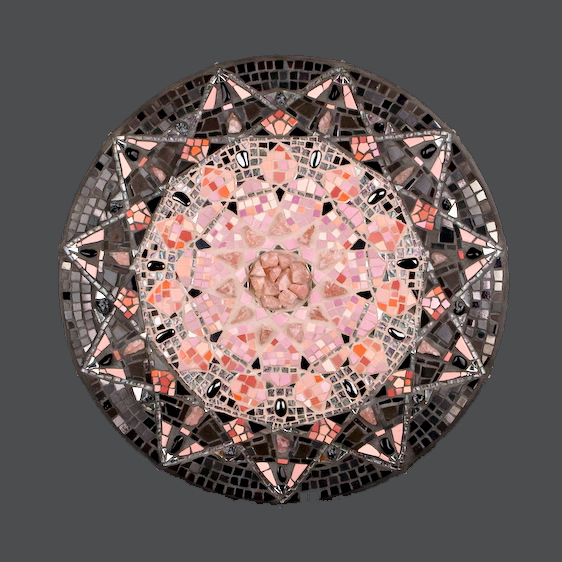
fabulous! thanks so much for sharing this story!
thanks for reading Stacy, please share the link with your mandala friends.
Thank you for writing about this! And I’m glad to meet another mandala maker!